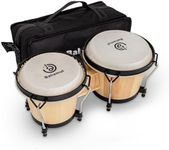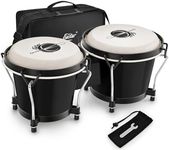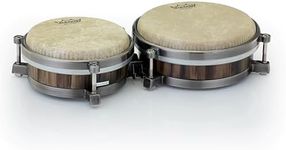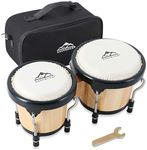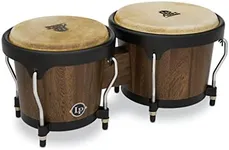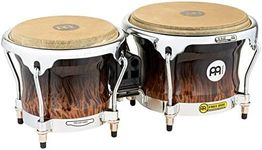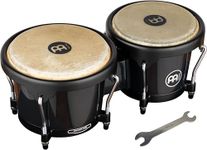Buying Guide for the Best Bongo Drums
Choosing the right bongo drums can be a fun and rewarding experience, especially if you know what to look for. Bongos are a type of hand drum that originated in Cuba and are known for their distinctive, high-pitched sound. They are typically played in pairs, with one drum being slightly larger than the other. When selecting bongo drums, it's important to consider several key specifications to ensure you get the best fit for your needs. These specifications will help you understand the quality, sound, and playability of the bongos, making your decision easier and more informed.MaterialThe material of the bongo drums affects both the sound and durability. Bongos are commonly made from wood, fiberglass, or metal. Wooden bongos, often made from hardwoods like oak or mahogany, produce a warm, rich sound and are preferred by many traditional players. Fiberglass bongos are more durable and produce a brighter, louder sound, making them suitable for outdoor performances or high-energy music. Metal bongos are less common but offer a unique tone and are very durable. Choose wooden bongos for a classic, warm sound, fiberglass for durability and brightness, or metal for a unique tone.
Head MaterialThe drumhead material significantly influences the sound and feel of the bongos. Natural skin heads, usually made from cowhide or buffalo hide, provide a traditional, warm sound and are preferred by many professional players. They are sensitive to humidity and temperature changes, which can affect tuning. Synthetic heads, made from materials like plastic, are more durable and less affected by weather conditions, offering consistent sound and tuning stability. If you play in varying climates or need low maintenance, synthetic heads are a good choice. For a traditional sound and feel, opt for natural skin heads.
SizeBongo drums come in various sizes, typically measured by the diameter of the drumheads. The most common sizes are 6-7 inches, 7-8 inches, and 8-9 inches. Smaller bongos (6-7 inches) produce higher-pitched sounds and are easier to transport, making them ideal for beginners or those who travel frequently. Medium-sized bongos (7-8 inches) offer a balanced sound and are versatile for different music styles. Larger bongos (8-9 inches) produce deeper, richer tones and are suitable for players looking for a fuller sound. Choose the size based on the sound you prefer and your playing needs.
Tuning MechanismThe tuning mechanism of bongo drums affects how easily you can adjust the pitch. Traditional bongos use rope tuning, which involves tightening or loosening ropes to change the tension of the drumheads. This method can be more challenging and time-consuming but offers a classic look and feel. Modern bongos often use mechanical tuning with metal lugs and tuning keys, making it easier and quicker to adjust the pitch. If you prefer a traditional aesthetic and don't mind the extra effort, rope-tuned bongos are a good choice. For convenience and ease of use, opt for mechanically tuned bongos.
Brand ReputationThe reputation of the brand can be an indicator of the quality and reliability of the bongo drums. Established brands with a long history in percussion instruments are more likely to produce high-quality bongos with good craftsmanship and sound. Researching customer reviews and seeking recommendations from experienced players can help you identify reputable brands. While brand reputation should not be the sole factor in your decision, it can provide assurance of the instrument's quality and performance. Choose a brand with a good reputation to increase the likelihood of a satisfying purchase.
